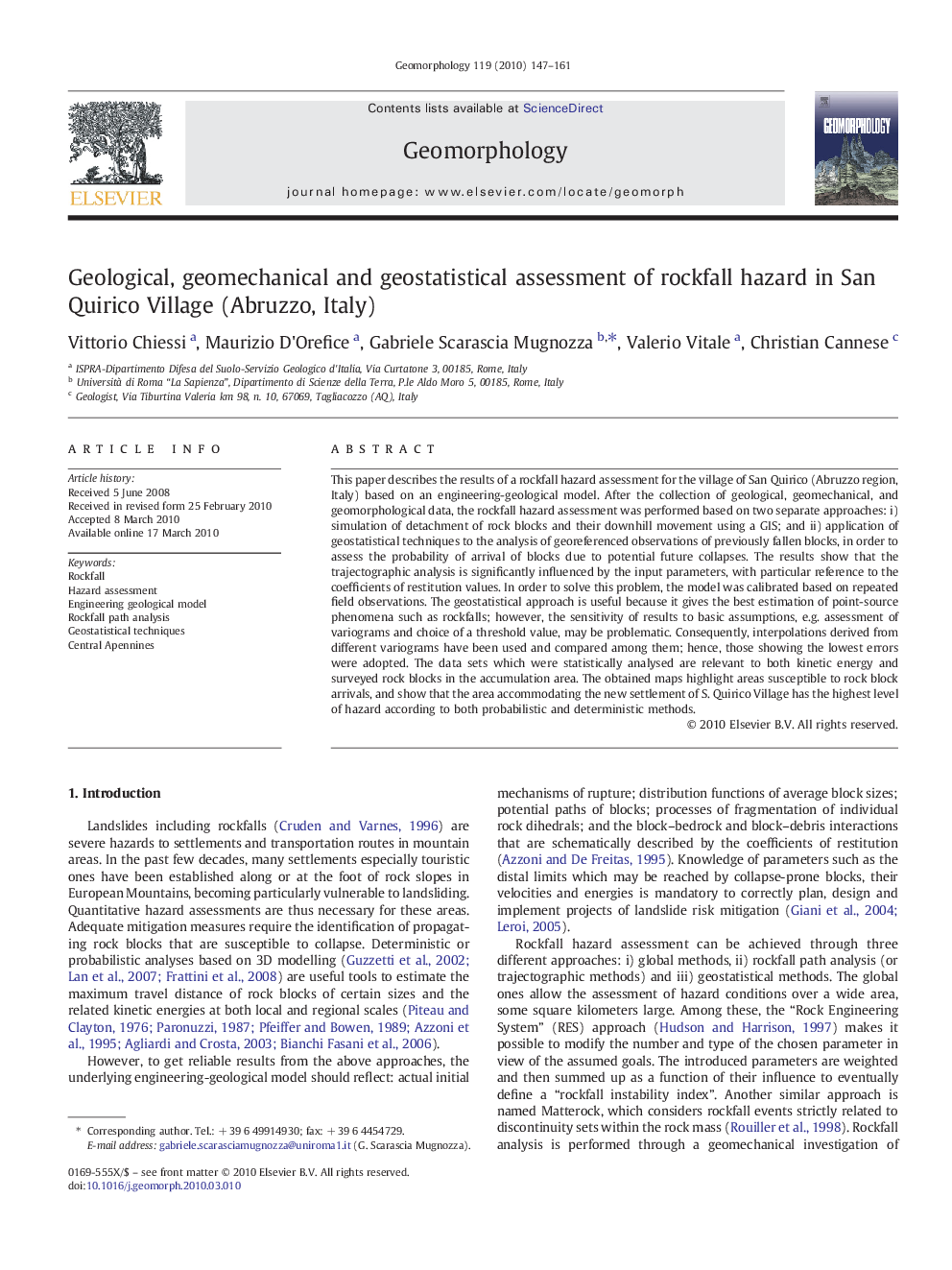| Article ID | Journal | Published Year | Pages | File Type |
|---|---|---|---|---|
| 4685983 | Geomorphology | 2010 | 15 Pages |
This paper describes the results of a rockfall hazard assessment for the village of San Quirico (Abruzzo region, Italy) based on an engineering-geological model. After the collection of geological, geomechanical, and geomorphological data, the rockfall hazard assessment was performed based on two separate approaches: i) simulation of detachment of rock blocks and their downhill movement using a GIS; and ii) application of geostatistical techniques to the analysis of georeferenced observations of previously fallen blocks, in order to assess the probability of arrival of blocks due to potential future collapses. The results show that the trajectographic analysis is significantly influenced by the input parameters, with particular reference to the coefficients of restitution values. In order to solve this problem, the model was calibrated based on repeated field observations. The geostatistical approach is useful because it gives the best estimation of point-source phenomena such as rockfalls; however, the sensitivity of results to basic assumptions, e.g. assessment of variograms and choice of a threshold value, may be problematic. Consequently, interpolations derived from different variograms have been used and compared among them; hence, those showing the lowest errors were adopted. The data sets which were statistically analysed are relevant to both kinetic energy and surveyed rock blocks in the accumulation area. The obtained maps highlight areas susceptible to rock block arrivals, and show that the area accommodating the new settlement of S. Quirico Village has the highest level of hazard according to both probabilistic and deterministic methods.
